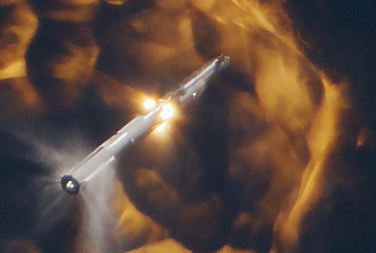SpaceX is gearing up for a busy day with two planned rocket launches, beginning with the deployment of its latest batch of Starlink satellites. After a brief delay due to unfavorable weather, the company is now set to launch on Thursday, September 5. This mission, part of SpaceX’s ongoing efforts to build its Starlink satellite constellation, will take off from Space Launch Complex 40 at Cape Canaveral Space Force Station at 11:33 a.m. EDT (1533 GMT).
The Falcon 9 rocket tasked with this mission will carry 21 Starlink internet satellites, including 13 with the new “Direct to Cell” capability, designed to provide direct internet service to mobile devices. The launch will be streamed live on SpaceX’s X account, beginning approximately five minutes before liftoff. In case of any further delays, there is a backup launch window set for 12:31 p.m. EDT (1631 GMT) the same day.
🚀 @SpaceX just launched Falcon 9 Block 5 | Starlink Group 8-11
███████████░░░░░░░░░ 86/148 (58.11%)⌛ 2024 is 67% complete
█████████████░░░░░░░ 67% pic.twitter.com/AhT3BpOD4F— SpaceX 2024 Progress (@SpaceX_Deimos) September 5, 2024
Later tonight, a second Falcon 9 rocket will launch from Vandenberg Space Force Base in California at 11:20 p.m. EDT (9:20 p.m. PT/0320 GMT on September 6). This mission will deliver a classified NROL-113 payload for the National Reconnaissance Office, further showcasing SpaceX’s versatility and capability in handling diverse launch requirements. This launch will also be available for live viewing on SpaceX’s X account.
Originally slated for September 4, the Starlink 8-11 mission was postponed by a day due to bad weather conditions affecting booster recovery efforts in the Atlantic Ocean. SpaceX then adjusted the launch time by three hours on Thursday to accommodate better conditions. The Falcon 9 rocket being used for this mission is a seasoned performer, making its 15th flight. It is expected to return safely to Earth roughly eight minutes after launch, landing on SpaceX’s drone ship, “Just Read The Instructions,” stationed in the Atlantic.
The Falcon 9 booster for the evening’s NROL-113 mission is even more experienced, marking its 20th flight. This particular booster has an impressive record, having successfully completed multiple missions, including 14 Starlink satellite launches and several scientific and commercial satellite deployments. Notably, it has also supported NASA’s DART asteroid mission and the Sentinel-6 Michael Freilich satellite launch.
#SpaceX is finalizing Launch Site and Starship for IFT-5, with FCC approval secured and only the FAA launch license pending. According to rumours, SpaceX is targeting October 3rd. pic.twitter.com/gG4QZB4mFT
— Carlibaba (@carlibaba37517) September 5, 2024
These launches are part of SpaceX’s aggressive schedule this week, which includes four missions in total, three of which are dedicated to Starlink. The company aims to bolster its Starlink satellite network, which seeks to provide global high-speed internet access, especially in remote areas. SpaceX recently launched two Starlink missions in under an hour on August 31, each deploying 21 satellites, mirroring the payload configuration for today’s mission.
Despite a recent setback on August 28, when a Falcon 9 booster failed to land successfully at sea, SpaceX has continued its launch activities. The Federal Aviation Administration (FAA) is investigating the incident but has allowed SpaceX to proceed with its scheduled launches. This rapid recovery and continued operational pace underscore SpaceX’s resilience and robust launch cadence.
Key Points:
i. SpaceX is set to launch two missions on September 5, starting with a Starlink satellite deployment from Cape Canaveral.
ii. The Starlink mission includes 21 satellites, 13 with “Direct to Cell” capabilities for direct mobile internet access.
iii. A second launch from Vandenberg Space Force Base will carry a classified payload for the National Reconnaissance Office.
iv. The Falcon 9 rockets for both missions are veteran boosters, demonstrating SpaceX’s reusability capabilities.
v. Despite a recent booster landing failure, SpaceX continues its ambitious launch schedule with FAA approval.
Kirk Volo – Reprinted with permission of Whatfinger News

